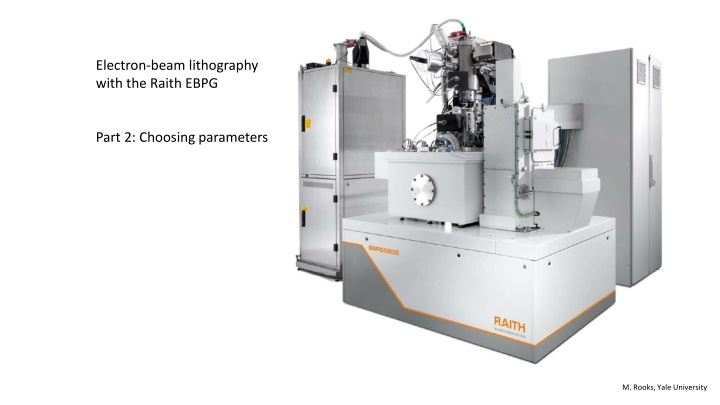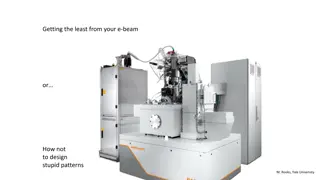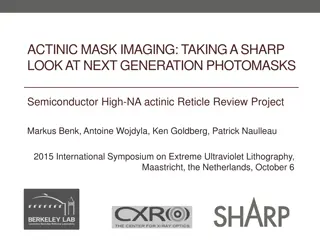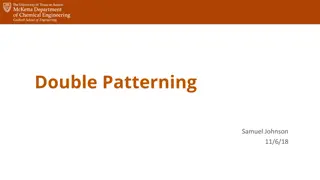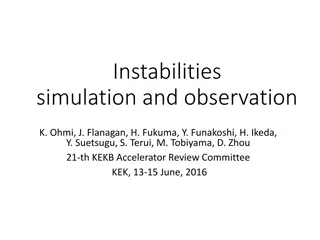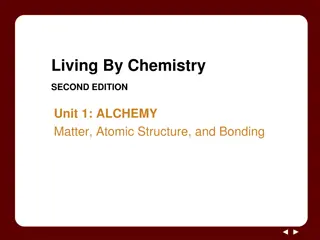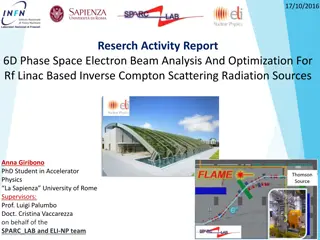Choosing Parameters for Electron-Beam Lithography with the Raith EBPG
In the process of electron-beam lithography with the Raith EBPG, selecting parameters such as resist type, resist thickness, spot size, dose range, resist sensitivity, and beam step size is crucial for achieving precise patterns. Factors like the substrate, developer, and pattern transfer technique influence parameter choices. Testing various doses through dose tests is recommended to determine the optimal exposure for different patterns and materials. Adjustments in exposure current or beam step size may be needed to meet the equipment's frequency limitations.
Download Presentation

Please find below an Image/Link to download the presentation.
The content on the website is provided AS IS for your information and personal use only. It may not be sold, licensed, or shared on other websites without obtaining consent from the author.If you encounter any issues during the download, it is possible that the publisher has removed the file from their server.
You are allowed to download the files provided on this website for personal or commercial use, subject to the condition that they are used lawfully. All files are the property of their respective owners.
The content on the website is provided AS IS for your information and personal use only. It may not be sold, licensed, or shared on other websites without obtaining consent from the author.
E N D
Presentation Transcript
Electron-beam lithography with the Raith EBPG Part 2: Choosing parameters M. Rooks, Yale University
Choosing e-beam exposure parameters Step 1: choose the resist and choose the resist thickness Typical choices: Metal liftoff PMMA or PMMA on top of P(MMA-MAA) Holes in SiO2 Plating Au ZEP, CSAR, or PMMA PMMA Etching Nb 20 nm HSQ on hard-baked photoresist Etching Si with Cl 500 nm HSQ
Choosing e-beam exposure parameters Step 2: Choose a spot size < minimum feature size EBPG theoretical on-axis spot size at 100 kV 100 For example, if you want 20nm wide lines you should use a spot size no larger than about 5nm. According to this plot, you could choose the 200um aperture at 3 nA, or you could choose the 300um aperture at 1nA. Of course you should pick the larger current, to run faster. Spot Size, nm 400 m aperture 10 300 m 200 m 1 1 100 0.1 10 Current, nA
Choosing e-beam exposure parameters Step 3: Select a range of doses for testing* Your first run should always be a dose test. Choose a range of doses that goes from too low to too high. Then expose your pattern (or part of it) a number of times using different doses. The best dose will depend on the pattern, the substrate, the developer and to some extent on the pattern transfer technique. It s not like using a laser printer; some testing and tweaking is always required. Very small features with very few pixels will require even higher doses than these. Resist Developer Typical dose range 800 to 3000 C/cm2 PMMA IPA/water, cold ZEP or CSAR Xylene, cold 500 to 1000 HSQ MF312 (TMAH) 800 to 3000 * We always start with a dose test, because you can t trust your friends to tell you the right dose. In fact, you might need several different doses for different parts of the pattern.
Choosing e-beam exposure parameters By area we mean the area of one pixel, which is the square of the beam step size. The dose delivered to one pixel is the same as the dose delivered to the entire shape. Step 4: Resist sensitivity and beam step size Number of electrons in a pixel = The beam dwells on one pixel for a time equal to 1/frequency. The maximum frequency of our EBPG is 50 MHz. This constrains the exposure current, since there is a minimum dwell time. current * time = dose * area In other words, current / frequency = dose * (beam step)2 To stay under the speed limit (125 MHz on the EBPG5200 or 50 MHz on the older EBPG5000) we can lower the current, or increase the beam step size. Beam step size
Beam step size The beam step size is the effective pixel size, even if the beam spot is larger or smaller than the step size. The average dose delivered to each pixel will still be current/area, where area is (beam step)2. We don t have to worry about the spot size when calculating the dwell time. Of course, if the spot size is large (as shown on the right) then the shape will be too large. On the other hand, if the spot is very small and if the dose is too low, then the shape might end up an array of dots! But under normal circumstances, with the proper dose, the size of a shape is only a weak function of the spot size.
Choosing e-beam exposure parameters Step 4: Resist sensitivity and beam step size the easy way You can use the previous equation to calculate the minimum beam step size, or you can do it the easy way, using our handy EBPG parameter calculator. Simply enter values for the exposure current and minimum dose, then this program will calculate the minimum beam step. Do not work too closely to 125 MHz (or 50 MHz on the older machine). If the beam current is higher than expected, then the dwell time could be too small, causing the exposure to stop. Find this program on the ebeam server desktop, or download the program from nano.yale.edu
Choosing e-beam exposure parameters Step 5: Design Now that you have chosen a beam step size, be sure to design the pattern so that all of the shapes snap to some multiple of the beam step size. Otherwise, strange things will happen when your pattern snaps to the exposure grid. This is especially important for periodic structures. Did you already do the CAD ? Go back and fix it. Starting over is often the best choice. That s true in general.
End of part 2 Now you should proceed to the quiz.
